 |
|
Reference phono preamp review
Introduction
It's amazing how much we are affected by bias and preconception. We all have them to some degree although many won't admit it. I began my phono upgrade quest with a very specific preconception: I knew that I was going to buy the Lamm LP2 phono preamp. The reviews were great, trusted people whom I respect recommended it and I heard it myself during a long dealer audition. Although I own the Walker Proscenium Gold Signature turntable, I frankly did not believe that the Walker Reference phono preamp could compete with the Lamm, Steelhead and Levinsons of the world. Boy was I wrong. Let me restate another and freshly minted bias: I consider Lloyd Walker one of the great high-end designers.
Fanatical detail - again
The Walker Reference phono preamp could best be described as an ultra-sophisticated minimalist design. There are no circuit boards. The design is not only point-to-point in the traditional sense but actually component-to-component wherever possible and wired with directional ultra-pure solid silver wire. The Walker philosophy for this piece is the same as for his turntable – to use accepted design and circuit theory only as a rough starting point. Everything (and I mean everything) is designed, tested and tweaked by his golden ear, down to an absolutely fanatically insane level. For example, all wire in the circuit is directional. This is accomplished by replacing a batch of wire in a known circuit and listening to it, then reversing the wire and re-listening. One way will sound better. This is the same wire used in medical surgeries connecting the brain and the ear. Did you ever wonder whether the amount of bending a wire in a circuit -- soft corners or hard-angle bends -- would affect the sound? Lloyd has. Vibration control? Yes, it has a major effect on the sound and therefore, the Reference has a full complement of Valid Points and resonance control discs - lead, of course. Why? Lead sounds better. Any component that is mounted internally is mounted on hardwood. Why? It sounds better. The custom RCA jacks are hand-plated silver. Why? It sounds better. On and on - you get the idea.
|
|
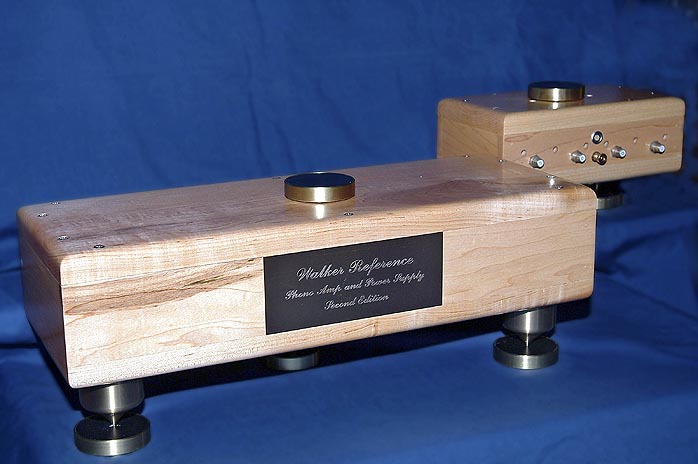 |
|
Description and circuit highlights
Lloyd has done a far better job at describing his design than I, so I won't repeat it here. For a fuller discussion about the design, you can reference his following interview. Here is my quick summary: The Reference phono is an attractive two-box affair made by partner Fred Law from solid maple wood. It is a solid-state, true dual- mono design with a remote power supply. All components are not only of the highest quality but most are modified by Lloyd. Proprietary nude 0.005% tolerance resistors, some reportedly costing $30 each, are re-worked. There are no carbon or epoxy resistors anywhere. High-grade Teflon caps show up in the RIAA equalization circuit, with none crossing the signal path. Ultra expensive Black Gate caps are used in the power supply. The output is direct- |
|
|
|
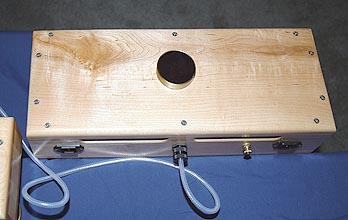 |
|
coupled and eschews transformers or capacitors to improve the sound. There are no switches, lights, transformers, sensors, jumpers or capacitors in the signal path - nothing to compromise the performance. D/C offset is nulled via a supplied voltmeter. The amp chips are a NASA military-grade. It took Walker one full year to get government permission to purchase these and he had to buy a lifetime supply. If I recall correctly and accounting for safety stock, less than 200 of these preamps will ever be made. It is a shame that only a handful of vinylists will ever experience this remarkable product. Finally, the entire unit is deep-immersion cryo-treated, a process which takes 8 to 9 days after assembly.
Operation
Keeping in line with Walker's minimalist philosophy, there are no controls, not even an on/off switch. That makes operation pretty easy. Plug it in and leave it alone. Periodically check the D/C offset using the supplied voltmeter. The procedure is similar and no more complex than adjusting the bias on a tube amp. After a break-in period of a few weeks and if you can get past your anal compulsions, the offset rarely has to be checked.
Any device with the resolution of the Walker demands the finest in cabling. Not that it sounds bad with inexpensive power cables and interconnects, but if you are at the Walker level of resolution, you will hear a noticeable improvement with the best cabling. I've tried many interconnects: Nordost, Transparent and others. To my ears, the Omega Mikro Ebony sounds by far the best - no real surprise since the phono preamp was designed and voiced with Omega Mikro products.
The Sound
As I said, I initially I believed that I was going to buy the Lamm LP2. Actually, I was fortunate to have a variety of phono preamps in my system to conduct a mini shoot out. First a little history: For many years, my standard was the Krell Reference - a great unit and a bargain, too. Then I added the Levinson Reference module to the 32 preamp. In house also was the Lamm, which I originally auditioned in a wonderful Lamm/Kharma system. There I heard the Lamm compared directly to the Manley Steelhead. In my opinion, it wasn't even close. The Lamm was superior in every way. The problem? The demo system was vastly different from my own so I arranged for an in-home trial expecting it to be mere formality on my way to an eventual Lamm purchase.
Lloyd who's certainly not shy has often told me how his phono preamp was the best in the world. So I called him on it and he not only agreed to the mini shoot out but personally brought the unit over to my home and installed it. What a treat - Levinson, Lamm and Walker all together in my room. This is where my preconceptions were turned upside down and inside out. Let's start with the conclusion: The Walker Reference isn't just better than the competition, it blows them away. Its improvement in my system is possibly equaled only by my first audition of the Tenor Audio 75i OTLs. The Walker Reference sounds neither tube nor solid state but has the best magical qualities of both. The Levinson has spectacular resolution and detail; the Lamm offers an incredibly musical and seamless soundstage. The Walker has both and more. With all due respect to those great products, they are not in the same league as the Walker. Compared to everything else I've ever heard, the improvement here was not incremental but immense.
Sound Specifics
I honestly believed that the days of dramatic improvements for my system were over. The best I could hope for now were small incremental gains. Wrong again. The Walker Reference makes the speakers disappear and presents a vivid and seamless musical picture where the music exists almost in real space. Anyone fortunate enough to have heard a properly set-up Kharma system knows what I mean. With the Walker, there is a fully developed three-dimensional sound field that transcends the reality of your room as you know it. The apparent size of the musical event varies properly with the recording. When the recording allows, the sound extends far past the physical walls of the room. You are not just listening to the music but fully immersed in it.
|
|
 |
Whether it was my equipment or room acoustics, I always had trouble with soundfield depth. Now I can truly hear deep into the recording. Listen to a Mercury recording such as The Firebird and you'll be rewarded with spectacular orchestral front-to-back layering. I've had exciting sound before but it was in all honesty somewhat artificial, with hi-fi type spotlighting of instruments and effects. The Walker provides this immense detail without the spotlighting effect. Listen to "Brazilian Sleigh Bells" on Mercury Hi-Fi A La Espanola. Previously, this always sounded like one mass of bells. With the Walker, it is the sound of a mass of individual bells. This defines one of the great strengths of the Reference. As with live music, you can listen to the music as an organic whole or you can choose to focus on one specific part or instrument - simultaneously. In real life, an instrument like the flute can easily be heard in a full orchestra. The flute floats almost above the orchestra. With recorded sound, the quiet instruments are often blended, masked or suppressed relative to the louder or more dominant sounds - but not with the Walker. Delicate instruments are realistically reproduced. The attack and subtle decay are utterly convincing.
These are the questions I ask myself: Does the music touch my soul? Am I emotionally exhausted after an evening of listening? Am I drawn into the music? Is my body filled with goose bumps? These are the answers that matter most to me. The Walker has elevated my system in all of these respects. Listen to Oscar Peterson's West Side Story, Lori Lieberman, Willie Nelson's Stardust. With the lights out, you'd swear that they are in the room with you. If imaging is what you are after, look no further.
|
|
 |
|
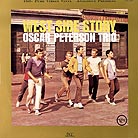 |
|
|
Want some fun? Listen to Simon and Garfunkel's "Baby Driver" or Santana's Abraxas - the sounds swirl around the room and through your head like I have never experienced short of headphones. Until |
|
|
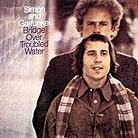 |
|
|
the Walker, one could have had fun in my room debating the relative merits of the phono preamps in my system - brand X was 10% better in soundstaging, unit Y had better midrange etc. Now there is no debate. The Reference is musical without being romantic. It is ruthlessly revealing of both partnering equipment and the recordings. But to be honest, every recording sounds simply better through the Walker. It is lightning-fast, ultra-quiet and paints the blackest backgrounds imaginable.
The extreme high end is finely detailed and precise yet avoids excess brightness. There is absolutely no grain or texture. Midrange is detailed and full, the most enjoyable midrange I have yet experienced. Imaging is very accurate but in the end, the bass was one of the most pleasant surprises. When I switched from the Levinson 33h amps to the Tenors, the only thing I gave up was that last word in deep bass energy and control. Now that has been restored. Try the Eagles' "Hotel California' from Hell Freezes Over or Neil Diamond's America and you'll feel like that guy in the chair of the old Maxell ads - blown away. This makes me listen to each record on the edge of my seat, eagerly anticipating the next sound. I forget about the equipment and just experience music. The detail and information flowing from this preamp are extraordinary.
|
|
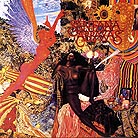 |
|
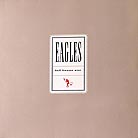 |
|
| The Walker Reference phono preamp is profoundly engaging, three-dimensional, focused and exciting. It will move you to rediscover your vinyl collection. Taking into account the exotic component costs, the years of development and what it competes against, the Walker Reference is a downright bargain in my book. Do you get the impression that I like it? |
|
|
|
 |
|
|
|
 |
|
 |
|
|
|
|
|
|
|
|
|
|
|
|